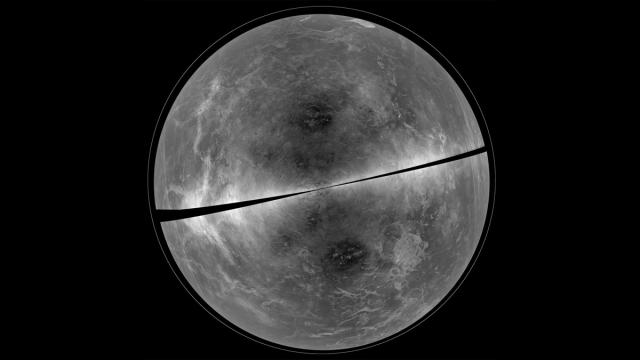We’ve never seen our closest planetary neighbour like this. The image above is a projection of the radar data of the surface of Venus, created by the astronomers of National Science Foundation’s Green Bank Telescope and Arecibo Observatory.
You may ask why is this image so special? NRAO explains:
From earthbound optical telescopes, the surface of Venus is shrouded beneath thick clouds made mostly of carbon dioxide. To penetrate this veil, probes like NASA’s Magellan spacecraft use radar to reveal remarkable features of this planet, like mountains, craters, and volcanoes.
Recently, by combining the highly sensitive receiving capabilities of the National Science Foundation’s (NSF) Green Bank Telescope (GBT) and the powerful radar transmitter at the NSF’s Arecibo Observatory, astronomers were able to make remarkably detailed images of the surface of this planet without ever leaving Earth.
Here is the full image, showing Venus’ mountains and ridges in fine detail. It’s incredible.
